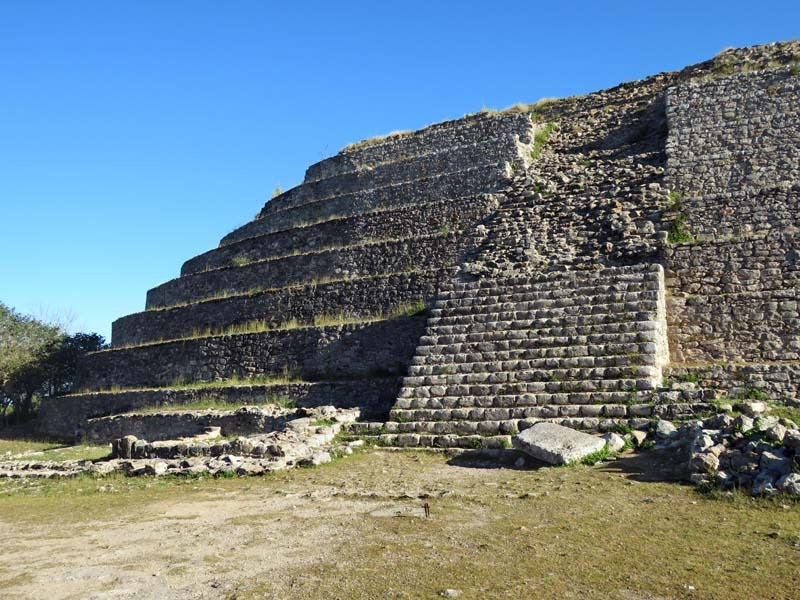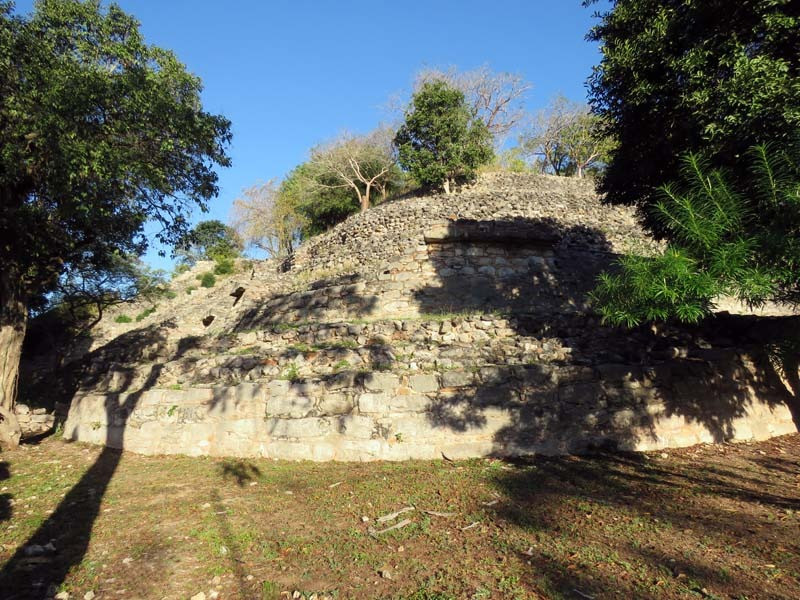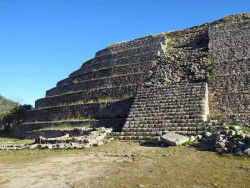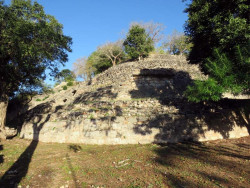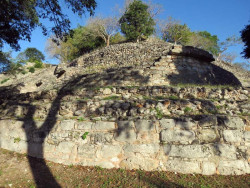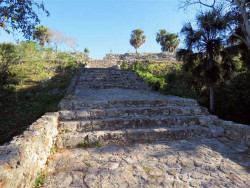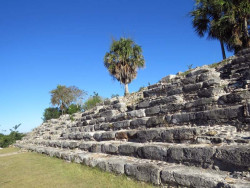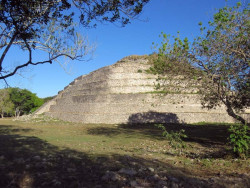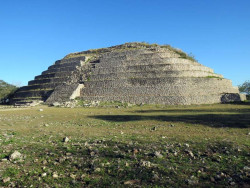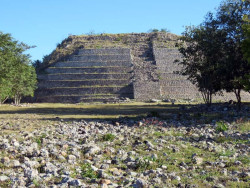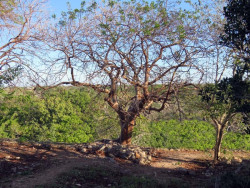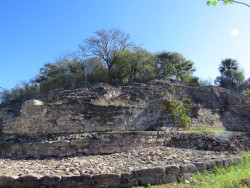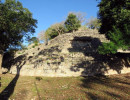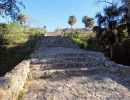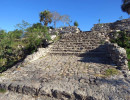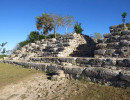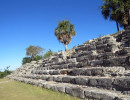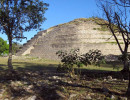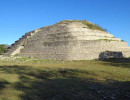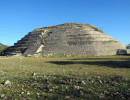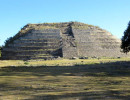- You are here:
- Home
- Man-made
- Archeological Sites
- Kinich Kak Moo Pyramid
Kinich Kak Moo Pyramid
The Mayan Kinich Kak Moo Pyramid in Mexico
Kinich Kakmó, (also spelled Kinich-Kak-Moo) was a god of the Mayan pantheon. There is also an important archaeological site dedicated to Kinich Kakmó located in the city of Izamal in Yucatán, Mexico, 41 miles east of Mérida and about 37 miles northwest of Chichén Itzá. Izamal has been continuously inhabited since about 700 B.C. Most of its construction was during the Late Pre-Classic through the Early Classic (200 B.C.-600 A.D.).
The Spanish invaders recognized the importance of the ruins to the indigenous Maya and erected a massive religious complex known as the Convent of San Antonio de Padua within its ceremonial center in 1549 A.D. This Catholic religious site was visited by Pope John Paul II in 1993 and has since become a modern pilgrimage site for Mexican Catholics.
In the pantheon of the Mayan civilization, Kinich-Kak-Moo refers to an aspect of the sun god. The name is broken down in Mayan as follows: K'iin, which means sun; ich, which means face or eyes; k'áak', fire; moo, macaw. That is a fire macaw with a face or eyes of the sun. In the Dresden Codex, Kinich Kakmó appears with the head of a macaw and a human body carrying a lit torch in each hand, which is a way of validating the interpretation of the name made by renowned Mayanists such as Alfredo Barrera Vásquez. In the cited codex it is interpreted that the torch is a symbol of drought or scorching heat. It is believed that the god Kinich came down in the heat of the midday sun, to burn and therefore purify the sacrifices or offerings brought to the Mayan pantheon, using the form of a macaw.
In pandemic times or during plague epidemics, the people came with offerings to Kinich Kakmó because they thought that the sun ruled over health. Kinich Kakmo was seen as a manifestation of Kinich Ahau, the sun god. He was also linked to Zamná or Itzamná and it was with this name that he was idolized in Izamal, where the Mayans erected a pyramid to his name.
The pyramid of Kinich Kakmó located north of the main square of the city of Izamal is one of the largest in Mexico, with a volume of 700,000 m³. Due to this dimension and the architectural complex that accompanies this pyramid, archaeologist Charles E. Lincoln assumes that Izamal was the seat of one of the most important entities, demographically, politically, and economically, in Yucatán.
Within the colonial city of Izamal, there are other important Mayan monuments, some of which are in the process of being excavated and exhibited by the National Institute of Anthropology and History of Mexico. Izamal's Mayan origin probably dates back to the 6th century AD in the classic Mesoamerican period. Izamal has been called the City of the Hills, referring to the five ostensibly visible mounds that contain pre-Columbian monuments, and to the "Yellow City" due to the entire historical section of Izamal is painted yellow.
Photographed in 2024.
